Marlink enables 250 Mbps uplink for PGS to gather critical offshore data
Marlink has upgraded the smart hybrid VSAT installation on the seismic research vessel Ramform Hyperion to provide an uplink speed of more than 250 megabits per second using GEO VSAT.

This throughput was achieved to enable the transfer of seismic data from the vessel to its landside headquarters for processing in real time.
The increase in capability and efficiency for the vessel’s network reflects the very high value of the exploration 3D, high-density 3D or 4D undersea imaging it produces.
Using a bespoke engineering approach, Marlink’s in-house team of engineers designed a technical solution based on a 2.4 meter VSAT antenna, enabling seamless transfer of 2.7 terrabytes of data from ship to shore in 24 hours.
Longer term, the solution was able to provide an average capacity of more than 230 Mbps upload from the vessel. The data transfer was achieved using Marlink’s network of high throughput GEO satellites, with the focus on delivering data at the required speed specifically to shore.
Beyond theoretical specifications, the trial aimed to evaluate the real-world performance of VSAT services in a dynamic maritime environment.
Factors such as signal stability, latency, and adaptability to varying weather conditions were integral to the assessment.

The achieved throughput easily surpassed that possible on LEO services and demonstrates the performance possible using GEO
VSAT to provide a guaranteed quality of service.
The hybrid network also provides a global service without geofencing to territories and locations.
“For operators like PGS, the pursuit of cutting-edge technology that can create the highest possible operational efficiency is paramount and a vision we share,” said Tore Morten Olsen, President Maritime, Marlink. “This groundbreaking collaboration marks a significant milestone for the maritime industry, signifying a paradigm shift in upload-speeds for geophysical survey operations at sea.”
“Operating in a highly demanding and specialised sector, our demands are for partners who are willing to push the boundaries of what is possible today and tomorrow,” said Erik Ewig, SVP Technology & Digitalization, PGS. “The real-time data transfer achieved on Ramform Hyperion has transformative implications for our ability to quickly move large volumes of seismic data from vessels to the cloud and start imaging the seismic data in parallel with ongoing data acquisition.”
Office of Space Commerce initiates TraCSS Pathfinder projects
NOAA’s Office of Space Commerce (OSC) has announced the start of a commercial pathfinder project in support of the agency’s Traffic Coordination System for Space (TraCSS) — to execute the pathfinder, OSC placed orders with three U.S. commercial space companies for space situational awareness (SSA) data and services.
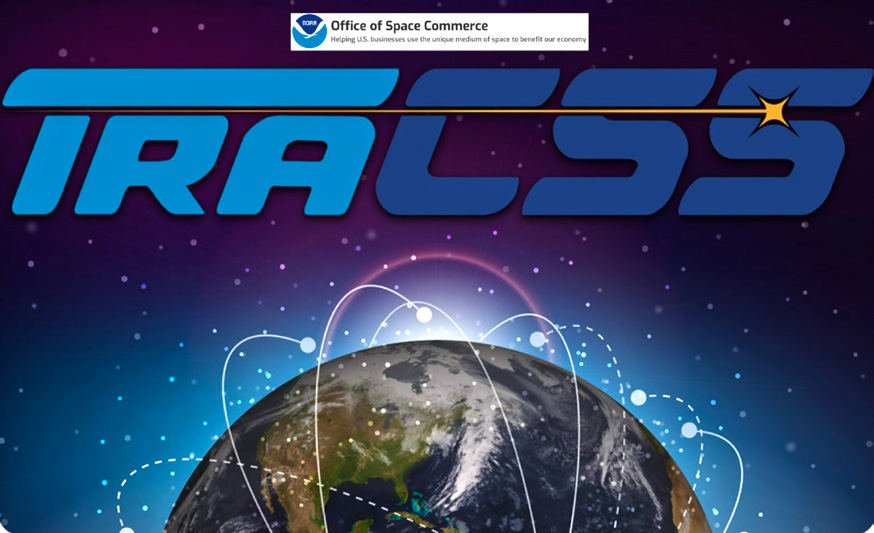
The project, known as the Consolidated Pathfinder, is a limited-term effort that focuses on SSA for the LEO regime. The Consolidated Pathfinder will inform the buildout of the operational TraCSS and will assess industry capabilities to maintain a space object catalog for a subset of LEO objects and provide follow-up tracking data on close approaches among those objects.
OSC placed orders with the following companies to conduct the Consolidated Pathfinder:
• COMSPOC for the provision of orbit determination services
• LeoLabs for SSA data and services focused on LEO
• Slingshot Aerospace for SSA data & services focused on LEO
OSC partnered with NASA to place the orders through the Global Data Marketplace, formerly known as the SDA Marketplace. As an extension of the Consolidated Pathfinder, OSC is in the planning phases to put out an additional order for data quality monitoring services.
OSC is developing TraCSS as a modern, cloud- based IT system that will provide basic SSA and space traffic coordination services to commercial and civil space operators for spaceflight safety, space sustainability, and international coordination. OSC is steadily progressing on building out the TraCSS architecture, with multiple inputs and on-ramps for commercial data, services, software, and innovation.
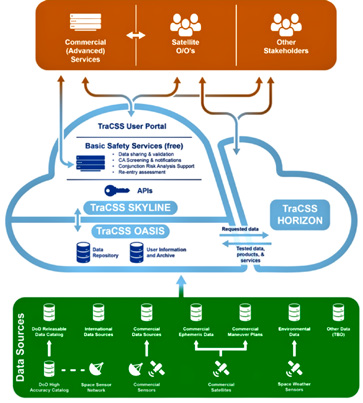
In a July of 2023 presentation, OSC discussed its plans to engage the commercial SSA industry in a series of TraCSS pathfinder studies. The pathfinders will be conducted in TraCSS- HORIZON, the R&D element of TraCSS dedicated to experimentation and development of new TraCSS capabilities. Each pathfinder focuses on specific SSA capabilities, exploring technical issues to inform the integration of such capabilities into a future, operational TraCSS service.
The Consolidated Pathfinder combines three of the pathfinders that were discussed last July…
• Commercial SSA Data
• Mission Planning
• Data Integrity Monitoring
Orders for the Consolidated Pathfinder were placed based on evaluations of prior commercial data buys and OSC’s desire to explore scalable capabilities focused on LEO.
In addition to preparing a data quality monitoring order to extend the Consolidated Pathfinder, OSC is also preparing an order for another TraCSS pathfinder on Improved Satellite Owner/Operator Ephemeris. That study will soon start an initial set-up phase with satellite operators. OSC plans to seek participation from commercial SSA service providers for funded services on this activity in the spring of 2024, via the Global Data Marketplace.
“Through this pathfinder, and others to follow, we are working diligently toward incorporating commercial capabilities into TraCSS,” said OSC Director, Richard DalBello. “The Office of Space Commerce has always championed the government’s use of commercial space capabilities, and it is a core enabler of our own SSA program.”
Resolve Optics offers rugged lenses for use in military and space applications
Resolve Optics reports on ongoing and increased demand for rugged high-performance lenses for military and space applications where the need for vibration / shock testing prior to deployment is a vital prerequisite.

Rugged lenses for military applications.
For most military applications – operators demand much higher reliability than they would for most standard industrial products. Resolve Optics MIL- SPEC lenses have much higher life expectancy than regular commercial grade lenses.
The defective rate is also extremely low. Lenses in military products are regularly subject to vibration.
When functioning, vibration can be quite harmful to a lens. Slight vibration might cause malfunction in lenses, severe vibration to the body structure may result in damage that leaves it beyond repair. A MIL-SPEC lens can be designed to withstand vibration effects.
Shock waves are also highly detrimental to the performance and operation of high precision military optical products.
Ruggedization to prevent changes in focus from shock and vibration is often enabled by simplifying the lens design and re-enforcing the mechanics of the optical system.
The cost of launching optical payloads into space is considerable.
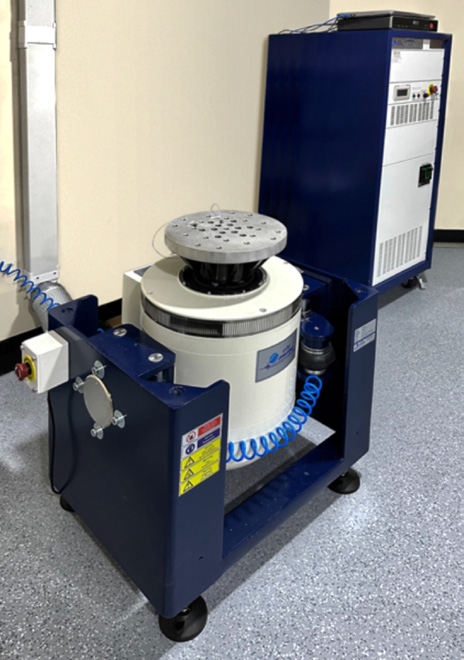
ETS MPA101-L215M Vibration Shaker coupled with a DTC
Venzo 880 controller.
Consequently, incorporating only ruggedized lenses or optical system into a satellite or space observation system is critical forachieving longerterm, high-performance operation.
During launch into space – lenses in high precision instruments and cameras are subject to high levels of vibration and shock.
To minimize the effects of vibration and shock it is advisable to keep spaceborne components small and light.
Minimizing the mass of space optics and retaining them securely to an instrument baseplate will minimize the impact of vibration and shock.
Investment in state-of-the-art vibration/shock test equipment allows Resolve Optics to field test ruggedized lenses and optical systems prior to deployment on the battlefield or launch into space.
This vibration / shock testing service not only provide piece of mind that Resolve Optics lenses will not fail upon deployment but also will save customers considerable time and money by removing the need to use third party testing services.
The company’s new MPA101-L215M vibratory shaker coupled with a DTC Venzo 880 controller is certified and calibrated to ISO standards.
To read a case study on vibration and shock testing of a satellite payload prior to deployment please visit this direct infolink...
For further information on design and development of rugged lenses for military and space application please visit this direct infolink.
Rocket Lab receives million$$$ contract from SDA + SDA
Rocket Lab USA, Inc. (Nasdaq: RKLB) has been selected by, and is under contract with, the Space Development Agency (SDA) to design and build 18 Tranche 2 Transport Layer-Beta Data Transport Satellites (T2TL - Beta).
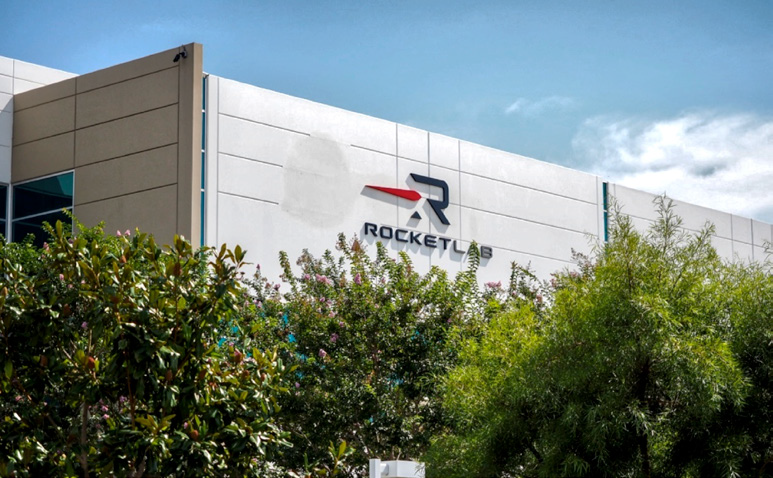
Rocket Lab will act as prime contractor for the $515 million firm-fixed price agreement to lead the design, development, production, test, and operations of the satellites, including procurement and integration of the payload subsystems.
The contract establishes Rocket Lab’s position as a leading satellite prime contractor, providing supply chain diversity to the Department of Defense (DoD) through vertical integration. The contract comprises $489 million base plus $26 million of incentives and options and will be carried out by Rocket Lab National Security (RLNS), the company’s wholly owned subsidiary created to serve the unique needs of the U.S. defense and intelligence community and its allies.
The SDA is procuring satellites in two-year “tranches” to build out a proliferated constellation in LEO to deliver needed space-based capabilities to the joint war fighter. The T2TL – Beta satellites, part of the Tranche 2 program, will be integrated into SDA’s Transport Layer to provide assured, resilient, low-latency military data and connectivity worldwide to meet DoD needs.
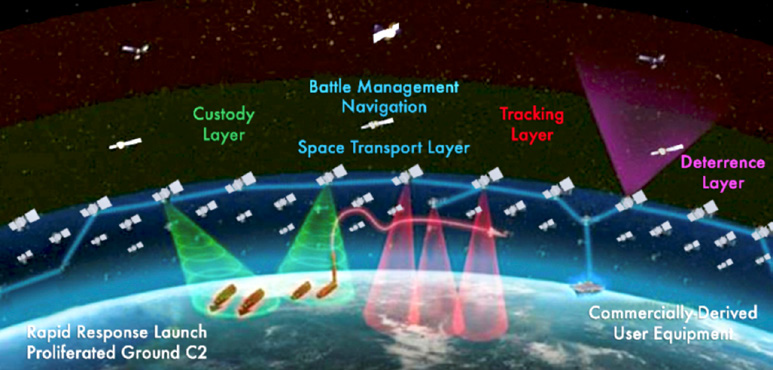
“This contract marks the beginning of Rocket Lab’s new era as a leading satellite prime. We’ve methodically executed on our strategy of developing and acquiring experienced teams, advanced technology, manufacturing facilities, and a robust spacecraft supply chain to make this possible. It’s exciting to now be delivering this capability for government and commercial customers alike,” said Rocket Lab founder and CEO, Peter Beck. “SDA’s acquisition approach favors speed, schedule certainty, and affordability to deliver next-generation space capabilities to the nation. We’ve proven Rocket Lab is capable of delivering this across our launch and spacecraft programs and we look forward to delivering it for SDA.”
“We welcome Rocket Lab as the newest member of Team SDA and our third performer on the T2TL- Beta program,” said Derek Tournear, SDA director. “Their selection as a new prime and bus provider demonstrates SDA’s dedication to our mission, which includes development of a growing, innovative marketplace necessary to sustain SDA’s proliferated architecture on two-year spirals.”
All 18 satellites will integrate subsystems and components built in-house by Rocket Lab, including solar panels, structures, star trackers, reaction wheels, radio, flight software, avionics, and launch dispenser. This high degree of vertical integration gives Rocket Lab a rare level of control over supply chain, enabling efficiencies and certainty on cost, schedule and quality.

The satellites will be built at Rocket Lab’s advanced spacecraft development and manufacturing complex within the company’s Long Beach headquarters.
The facility includes a 12,000 sq. ft. cleanroom and 40,000 sq. ft. of streamlined production and test facilities designed to support constellation class manufacturing and satellite assembly, integration and test for commercial, civil and national security customers. The satellites are scheduled for launch in 2027.
Rocket Lab has a backlog of more than 40 satellites in development and production. Rocket Lab satellite technology and components have been integrated into more than 1,700 satellite missions globally.
RocketStar secures million$ in seed funding + acquires Miles Space
RocketStar, Inc. has secured a $2 million seed investment and has acquired Miles Space, Inc., a space propulsion and spacecraft manufacturer, and has also added Mr. Mitchel Simpler to the company’s board of directors.
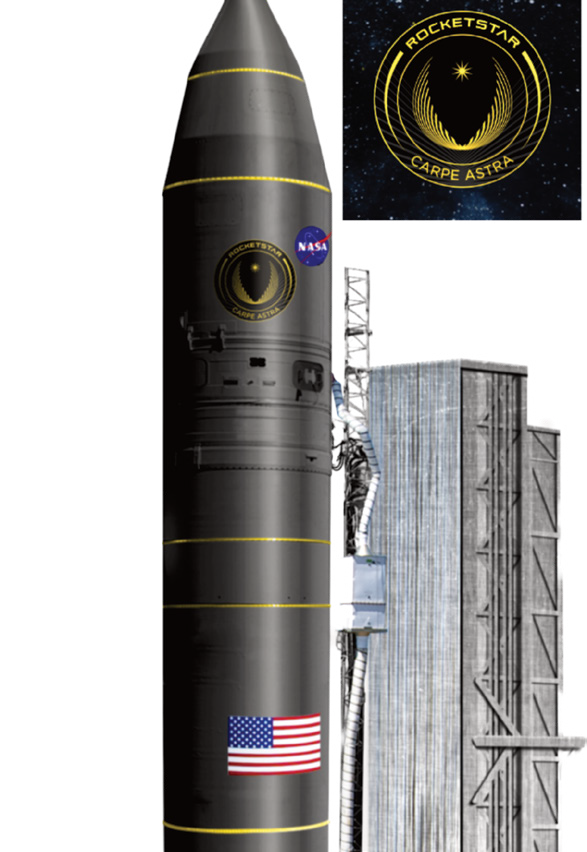
RocketStar’s $2 million seed investment will serve to solidify the merger and support operations. This investment also triggered the conversion of a previously issued set of $1.4 million notes to the new Series Seed equity.
In addition to closing the seed funding round, RocketStar announced the acquisition of Miles Space, Inc., an innovative company that developed the revolutionary electric thruster and is currently working on a nuclear- fusion enhanced version of that thruster with RocketStar’s guidance.
Lastly, Miles’ base thruster proposes a revolutionary change to in-space as well as Very Low Earth Orbit (VLEO) and in-atmosphere propulsion, as the thruster has shown to be able to operate with krypton, iodine, water, and air. It can literally create propulsion out of thin air.
Miles Space also brings with it a portfolio of distinctive digital signal processing software that enables communications deep into space, as well as capabilities for low probability of intercept communications and passive radar.
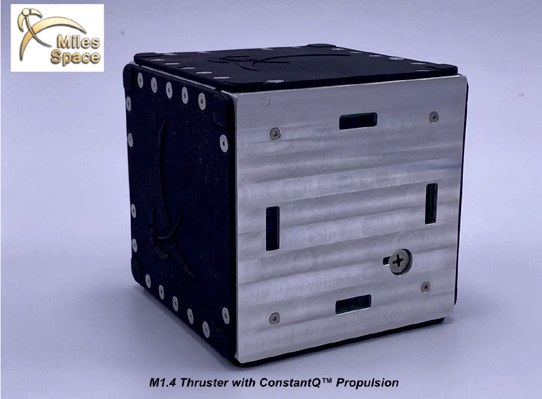
The The new director, Mitch Simpler, is Partner Emeritus and former Managing Partner of Jaros, Baum & Bolles as well as the former Chairman and National Director of the American Council of Engineering Companies for the State of New York and Vice Chairman for National ACEC.
“The company is proud to have completed this round at a significantly challenging time for such investments,” said RocketStar CEO Chris Craddock. “This investment enables us to further explore possibilities within the future of fusion propulsion and advanced aeronautics, both of which are core missions of our organization. We see a vast future ahead of us and we’re excited to be able to use this investment to help us realize this future. We are excited about the addition of Mitch to our Board and look forward to the great things that this investment and acquisition will do for our customers. RocketStar is an organization dedicated to redefining the boundaries of space exploration and satellite services, and each of these milestones helps us grow closer to achieving that goal.””
“We are thrilled to be joining RocketStar to commercialize our propulsion technology,” said Miles Space CEO Wes Faler. “This partnership is the first of its kind and enables RocketStar to bring nuclear fusion capabilities to the market. The combination of our two companies will also allow us to expand applications of our novel, digital signal processing software.”
Sierra Space awarded million$$$ prime contract by SDA
Sierra Space has won a significant contract by the Space Development Agency (SDA) for 18 missile warning and tracking satellites.
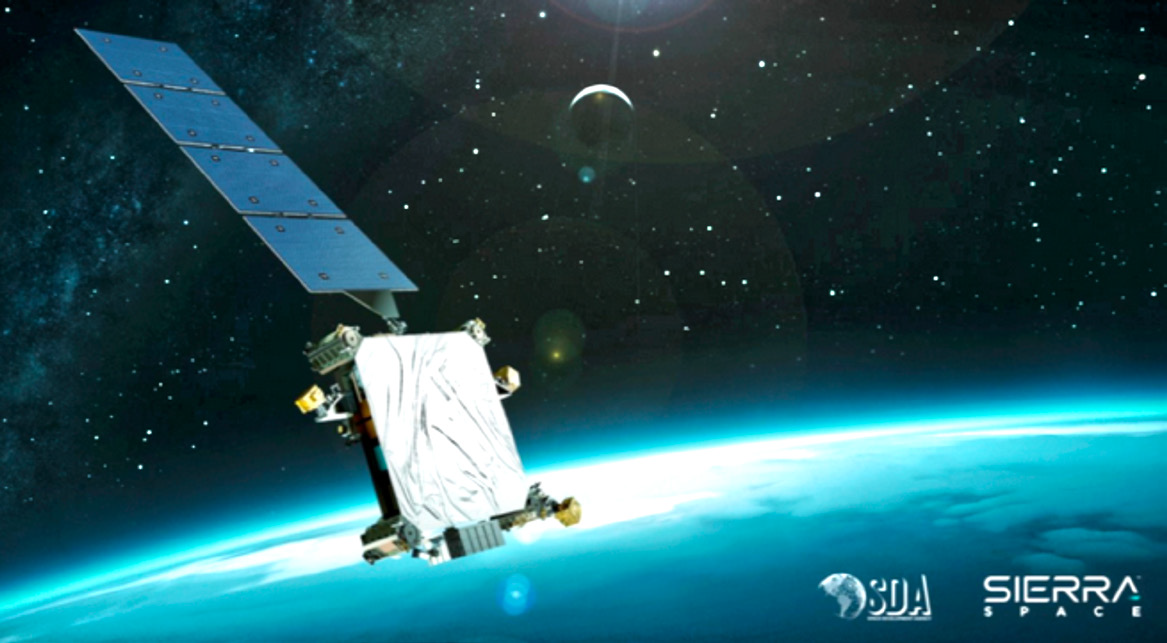
The prime contract, valued at $740 million and awarded through an Other Transaction Authority (OTA), is for the design, production, delivery, operations and sustainment of 16 missile warning and tracking satellites and two (2) satellites for missile defense and fire control. The contract includes two operational ground segments as well.
The satellites are for the portion of SDA’s Proliferated Warfighter Space Architecture known as Tranche 2 Tracking Layer, part of the Defense Department’s LEO constellation.
Sierra Space’s solution will accelerate the capability to provide global, persistent indications, detection, warning, and tracking of conventional and advanced missile threats, including hypersonic missile systems.
The company’s solution also delivers preliminary missile defense capability by incorporating fire control quality sensors into the constellation; it will generate fire control quality tracks that enable missile defense kill chains, a critical defense capability, to the warfighter.

The tracking layer satellites carry two configurations of optical sensor payloads built by Sierra Space mission payload partner GEOST, a LightRidge Solutions company. GEOST develops and builds high performance, multi-orbit, optical payloads that are affordable, low-weight and low-power, with integrated on-orbit processing and ground-based infrastructure.
This latest contract award makes Sierra Space the SDA’s newest supplier of satellites. The agreement includes a $20 million incentive payment for on-time delivery. The company will develop, integrate and test its space vehicles at Sierra Space’s satellite production facilities in Colorado.
“Under the $740 million SDA contract, Sierra Space will deliver an 18-satellite constellation for missile detection, and warning, with fire control quality tracks,” said Sierra Space CEO, Tom Vice. “Given the strength of our experienced mission-driven team, disruptive innovative technologies, employment of differentiated commercial practices, significant investments in systems and infrastructure, and the ability to execute with reliable performance and on-time delivery of warfighting capabilities to orbit, we have secured approximately $1.3 billion in next generation space-based national security programs.”
“Missile warning and missile defense is critical to the safety and security of our nation and its people,” said Rusty Thomas, Chief Technology Officer and SVP/GM Space Applications at Sierra Space. “Past winners of prior tranches for the tracking layer mission have been traditional big primes. This award puts Sierra Space on the short list of companies that can deliver, as a prime, in missions critical to the warfighter.”
Orbit Fab + ClearSpace partner to create in-space refueling service
Orbit Fab and ClearSpace have engaged in a multi-faceted strategic partnership to advance in-space refueling and servicing capabilities that will revolutionize space operations and serve as a foundation for a vibrant and sustainable space economy.
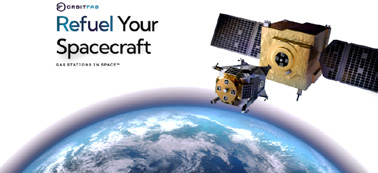
Under MoU, Orbit Fab and ClearSpace will develop key enabling technologies, building on their initial collaborative work that began several years ago. The two companies will leverage their complementary capabilities and missions to accelerate the availability of propellants in space by creating a refueling service architecture pairing an Orbit Fab fuel depot with a ClearSpace shuttle.
Market demand for on-orbit refueling reflects the need for unconstrained in-space mobility and the value of extending the operational utility of critical space assets.
The U.S. Space Force (USSF) considers Space Mobility and Logistics (SML) as one of its core competencies, and in-orbit refueling directly addresses the challenge of replenishing spacecraft consumables. Furthermore, refueling will become a key competitive advantage for operators of commercial satellites and service vehicles.
Orbit Fab is already supporting ClearSpace with the design of its CLEAR mission for active debris removal, funded by the UK Space Agency, to enable the service vehicle to be refueled and reused.

The development of ClearSpace’s refueling shuttle adds to the growing ecosystem of service providers, building on the standards and vision established by Orbit Fab’s foundational work in fuel depot development and fuel transfer interfaces.
The company’s RAFTI™ (Rapidly Attachable Fluid Transfer Interface) refueling ports and its GRIP™ robotic docking devices are already being integrated aboard a fast-growing number of vehicles, with RAFTI™ slated for integration on more than a dozen spacecraft, and GRIP™ being baselined on another five.
By combining Orbit Fab’s fuel transfer expertise with ClearSpace’s vision system and RPO capabilities, ClearSpace expands its in-orbit service portfolio and Orbit Fab extends the reach of its fuel distribution services, resulting in the creation of a competitive, commercial marketplace for turn-key, on-orbit refueling services.


